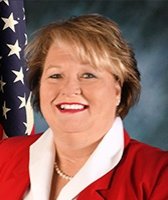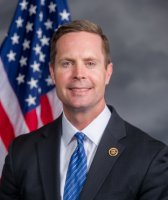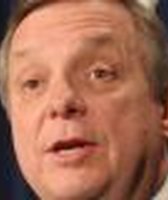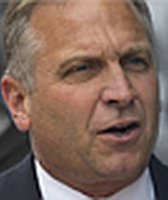Stand up for the facts!
Our only agenda is to publish the truth so you can be an informed participant in democracy.
We need your help.
I would like to contribute
Bernie Sanders says 49% of ‘new’ income goes to the top 1%
Speaking to a crowd of Chicago Teachers Union members as they considered a strike over contract demands, presidential candidate and Vermont Sen. Bernie Sanders riffed on the theme for which he is perhaps best known: economic inequality.
Sanders told the cheering crowd that, if elected, he plans to pay for his many proposals — including making public colleges and universities tuition-free and wiping out student debt — with his recently proposed wealth tax.
He said this is "a time of massive and grotesque income and wealth inequality in America."
"49% of all new income goes to the top 1%," Sanders said while ticking off his usual talking points on the gap between the nation’s richest and everyone else — some of which we’ve checked before — and promising that if he is elected, "the billionaire class and the large, profitable corporations will start paying their fair share of taxes."
While mulling a presidential run in early 2015, Sanders used a considerably more stark version of the same claim, contending almost all income growth at the time was going to the top 1%. We rated that Mostly True, finding Sanders had accurately represented a somewhat limited, though widely cited research study based on federal tax data.
But the discrepancy between Sanders’ new figure — which refers to income growth — and the one from a few years ago gave us pause, so we decided to take a closer look. It turns out his latest statement relates to an updated edition of the same study. Once again, he cited it accurately. Just like last time, however, there are several caveats worth keeping in mind.
Different ways to assess income
Sanders based his claim on the latest update to a study from Emmanuel Saez, an economics professor at the University of California, Berkeley, who uses pre-tax income reported in Internal Revenue Service filings to compare top income dating back to 1913. As Saez’s report notes, it’s the only data source that stretches back that far.
In his March update, Saez highlights his finding that average inflation-adjusted family income grew by 14% from 2009 to 2017, the latest year for which IRS data is available. But growth in the wake of the Great Recession was uneven, he notes, with the incomes of the top 1% rising 38% while the incomes of the bottom 99% grew only 8.7%.
"Hence, the top 1% captured 49% of the income gains during this recovery period," Saez concluded. That backs up the figure Sanders used.
But Saez’s work does not include income received from government programs such as Social Security, food stamps and unemployment compensation, or health insurance benefits. Other studies that do account for these significant income factors, along with after-tax income — including one performed by Saez — suggest a more narrow gap in income growth.
Because Saez’s calculations are based on pre-tax income, his work doesn’t account for the other way in which the federal government redistributes earnings — by requiring the wealthy to pay a heftier share in taxes. That’s particularly relevant here, given that Sanders was speaking about the need to hike taxes on the very rich.
"If you want to have a comprehensive measure of how Americans pay their bills, we’ve got to add all sources of income and we have to subtract the taxes that are taken out of our pay before we even get it," said economist Gary Burtless, a fellow at the Brookings Institution.
In a report published last year, Urban Institute economist Stephen Rose surveyed a collection of recent studies on income inequality, highlighting how differences in methodology "greatly affect findings" and identifying the Saez series Sanders cited as the clear outlier.
The Saez report Sanders drew from also takes as its starting point the end of one of the nation’s worst economic slumps. Experts told us that’s an important point to keep in mind because the country’s top earners experienced the biggest percentage of income declines during the recession, meaning the gains they registered during the first few years of the recovery as the stock market began to bounce back were especially large but are now growing more slowly by comparison.
Our ruling
Sanders said "49% of all new income goes to the top 1%."
That’s a reference to growth in pre-tax, pre-government benefit income during the economic recovery following the Great Recession from 2009 to 2017, which was calculated by one of the leading experts in the field of income inequality research.
However, it’s not the only way to measure income, and other economists we spoke with pointed to more comprehensive, though slightly more dated, studies that compare income growth after accounting for what people pay to and receive from the government.
We rate Sanders’ claim Mostly True.
MOSTLY TRUE — The statement is accurate but needs clarification or additional information.
Click here for more on the six PolitiFact ratings and how we select facts to check.
Our Sources
YouTube video, Bernie Sanders campaign, Sept. 24, 2019
"Bernie Sanders says 99 percent of 'new' income is going to top 1 percent," PolitiFact, April 19, 2015
Email: Sarah Ford, Sanders spokesperson, Sept. 25, 2019
Report: The Evolution of Top Incomes in the United States, Emmanuel Saez, University of California Berkeley, March 2, 2019
Report: The Distribution of Household Income for 2016, Congressional Budget Office, July 9, 2019
Report: Distributional National Accounts, The Quarterly Journal of Economics, Oct. 10, 2017
Phone interview: Gary Burtless, senior fellow of economic studies at the Brookings Institution, Sept. 26, 2019
Email: Justin Wolfers, professor of economics and public policy at the University of Michigan, Sept. 26, 2019
Report: How Different Studies Measure Income Inequality in the U.S., Urban Institute, Dec. 2018
Phone interview: Stephen Rose, nonresident fellow in the Income and Benefits Policy Center at the Urban Institute, Sept. 26, 2019
Browse the Truth-O-Meter
More by Kiannah Sepeda-Miller
Bernie Sanders says 49% of ‘new’ income goes to the top 1%
Support independent fact-checking.
Become a member!
In a world of wild talk and fake news, help us stand up for the facts.














































